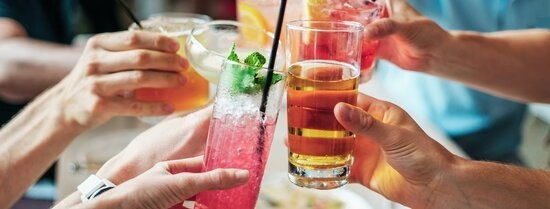Young people are increasingly hospitalized with alcohol poisoning — even though, according to Trimbos, they drink less than ten years ago. This is one of the findings of the PhD research by physician-researcher Louise Pigeaud, affiliated with the Reinier de Graaf Hospital and the Erasmus School of Health Policy & Management (ESHPM). Her study also shows that nearly half of these young patients suffer from a mental health disorder. Another striking finding: sixty percent of hospitalized adolescents show muscle damage, sometimes even in a severe form.
It is Saturday night in the emergency department. A sixteen-year-old boy is brought in by his friends. He is unresponsive, has vomited all over himself, and is wheeled into the department in a wheelchair. Pigeaud, who worked as an emergency physician, often witnessed such excesses. “The young people said they didn’t realize they were getting drunk. You often hear: ‘I blacked out and suddenly I was gone.’ Many teenagers have no idea what alcohol does to their bodies.”
More intoxications despite less alcohol use
Since 2014, the minimum drinking age has been raised to 18, and the NIX18 campaign was launched. In recent decades, young people have started drinking later and less, which seems related to this new legislation. However, that does not mean that the problems have disappeared. On the contrary, says the PhD candidate: “The number of young people ending up in hospital with alcohol intoxication has actually increased and seems to have only recently started to stabilize.”
Background and risk factors
The young people who end up in hospital are often vulnerable in other areas as well. Nearly half of them have a mental health condition, such as ADHD or depression. Problematic alcohol use within the family is also common. Her research shows that many young people have parents or relatives with alcohol addiction, and that nearly half have seen their parents drunk at least once. “That increases the risk that young people themselves will also experience alcohol problems and mental health issues,” says Pigeaud.
This often goes hand in hand with broader risk behavior. Young people who have ever experienced an alcohol intoxication smoke more often, use drugs more frequently, and have had sexual contact earlier than their peers. “We are increasingly seeing this combined use of alcohol and drugs among adolescents in the emergency department. And it increases the medical risks,” the researcher explains.
Muscle damage and the sports world
Another important focus of her research is the damage that alcohol can cause to the body. Hospital data show that sixty percent of young people admitted with alcohol intoxication show signs of muscle damage, and in 4.4 percent of cases it concerns a severe form of muscle breakdown (rhabdomyolysis). “This is especially relevant for young people who play sports,” says Pigeaud. “You think you are being healthy by exercising, but if you drink a lot, you undermine your own body.”
That is why Pigeaud also sees an important role for the sports world. She observes that compliance with age checks at sports clubs is low and that alcohol sponsorship remains widespread. “The sports sector can play a key role in alcohol prevention,” she says. “Precisely because alcohol is so intertwined with socializing and sponsorship, there is still much to gain.”
Why do young people drink?
A large European study of 52,000 young people, analyzed by Pigeaud, shows that adolescents mainly drink because they associate it with fun and socializing. Peer pressure appears to play a much smaller role than often assumed. “They say themselves: alcohol belongs at a party or special occasion. That image is reinforced by alcohol advertising and marketing that link drinking to happy moments. Parents also influence their child’s alcohol use. For example, if they drink a glass of wine with dinner every day, they normalize alcohol consumption for their child,” says Pigeaud.
Alcohol clinic and ‘golden hour’
An important part of her research focused on the alcohol clinic at Reinier de Graaf Hospital in Delft, where young people return several times after an intoxication. They complete an e-learning module, receive information from a pediatrician and psychologist, discuss their behavior, and, if necessary, are referred for additional care. “The moment directly after the intoxication is also called ‘the golden hour’,” Pigeaud explains. “During the first hours, young people are still impressed by what happened. That is the moment to intervene and create awareness.”
Later, in a calmer moment (one to two months later), they return to the alcohol clinic to reflect and to see whether there is an indication for additional help. And that seems to work. Whereas these young people initially drank more than their peers, six to twelve months after their hospitalization they drank less alcohol than their peers. Binge drinking also decreased. “An intoxication is a warning signal, but also an opportunity. You can show young people and their parents that this is not normal, that it is dangerous, and that they can change it.”
Stopping advertising and the normalization of alcohol
Pigeaud advocates an integrated approach to alcohol prevention among young people. This means: stricter enforcement of age checks, better education in schools and families, and a ban on alcohol advertising, especially in the sports sector and on social media. The normalization of alcohol and its association with social enjoyment, Pigeaud finds problematic. “Think of James Bond drinking a beer, or influencers promoting alcohol as if it’s all fun and carefree. That image sticks with teenagers.” According to the PhD candidate, that image must be broken. “Young people associate alcohol with pleasure, but underestimate the risks.”
- Researcher
- Related content

